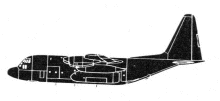Incident Overview
Description
A Cessna 208 Caravan aircraft, registered P2-MAI, owned and operated by Mission Aviation Fellowship (MAF) PNG Limited, experienced a loss of control during the landing roll at Miyanmin Airstrip, while conducting a non-scheduled flight, from Telefomin, PNG. There were 11 persons on board the aircraft; 2 pilots and 9 passengers. The pilot flying the aircraft was undergoing route and airstrip training. He was occupying the left seat and was Pilot Under Instruction (PUI). The pilot in the right seat was the instructor pilot for MAF conducting route and airstrip training for the new pilot. The pilot crossed overhead of the airstrip for an inspection of the surface and wind conditions. The crew did not observe any standing water or any wet areas on the strip. They also reported that the windsock indicated calm winds and the strip was clear. The aircraft joined mid-downwind less than half a nautical mile from the airstrip and tracked North West, descending from 1200 ft to 1000 ft before turning onto base. The aircraft began descending as it turned to line up on the final approach profile. There was a tailwind component of 5-12 kt on base and final. The aircraft overshot the turn onto final approach, 1.8 nm from the threshold at 900 ft. The pilot established the aircraft on the approach profile 1 nm from the threshold and at about 500 ft. The instructor stated that during final approach, the aircraft had descended below the normal approach profile causing him to instruct the pilot to adjust power and aim point to get back onto the correct profile. The pilot commenced the flare just under 20 ft AGL, 78 kt (85 kt ground speed). The aircraft touched down with an airspeed of 77 kt (82 kt ground speed) 36 m past the runway 11 threshold. The pilot stated that a few seconds after touchdown, he applied reverse thrust and the aircraft veered left. According to tyre track approximations, the aircraft appeared to have deviated about 220 m up-strip from threshold. The pilot stated that he applied full right rudder in an attempt to turn the aircraft back towards the center of the strip. The aircraft turned back to the right and rolled parallel to the centerline for another 100 m before it swerved left again, diverging at a 30ø angle from the centerline. It rolled for 60 m as it bogged into the soft ground. The propeller blades subsequently struck the ground and the aircraft turned sharply left causing it to tip onto its starboard side. The crew reported that there were no injuries sustained during the accident and subsequent evacuation. Causes [Contributing factors] Onlanding,the PUI applied reverse thrust and the aircraft veered left of the centerline. Rudder was applied to get the aircraft back onto centerline, however, the rudder was not effective to counter the effect of reverse thrust as the left wheel entered in a softened area of the strip surface, which resulted in the aircraft being unable to regain the centerline as the landing roll progressed. The PUI did not effectively manage the effect of torque to maintain centerline during the landing roll. The PUIs limited experience level on the aircraft type, low proficiency level in the use of reverse thrust during landing rolls, soft strip surface and soil condition were contributing factors of the accident.
Source of Information
http://www.aic.gov.pg/pdf/media/release/2020/Media%20Release%2002-2020.pdfhttp://www.aic.gov.pg/pdf/media/release/2020/Media%20Release%2002-2020.pdfShare on:



